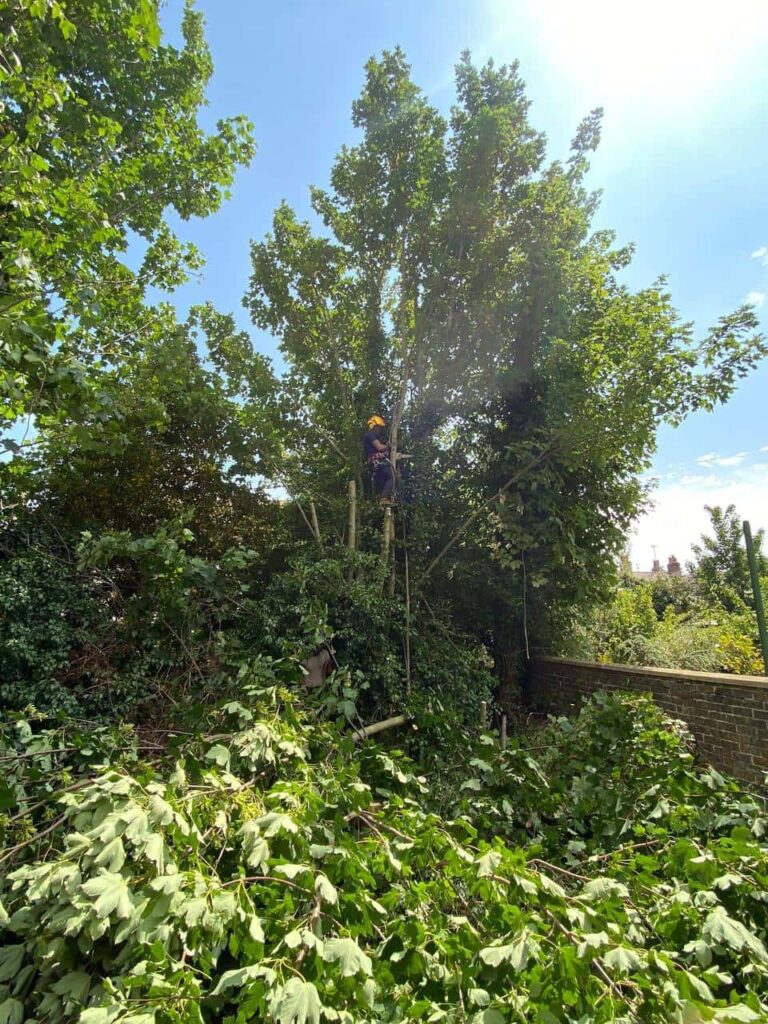Introduction: A blend of historical architecture and modern development often characterises urban environments. Maintaining the historical integrity of these areas is essential for preserving the unique character and cultural heritage they represent. One often overlooked aspect of historical preservation in urban settings is the role of trees. In this blog post, Wickham Market Tree Surgeons explores the significance of tree reshaping in the context of historical preservation in urban environments.
The Value of Urban Trees
Trees in urban areas serve as living witnesses to history. Many of them have witnessed the growth and transformation of cities over centuries. These trees contribute to the aesthetic appeal of historical neighbourhoods and provide numerous benefits, such as:
- Shade and Cooling: Trees offer natural shade, reducing the urban heat island effect and providing a cooler environment during hot summers.
- Air Quality: Trees act as natural air filters, improving air quality by absorbing pollutants and releasing oxygen.
- Aesthetic Appeal: Mature trees enhance the beauty and charm of historical neighbourhoods, creating an inviting atmosphere for residents and visitors.
- Wildlife Habitat: Urban trees provide habitats for various bird species and small wildlife, contributing to urban biodiversity.
- Cultural Significance: Some historical trees hold cultural or symbolic significance and are considered landmarks in their own right.
Tree Reshaping in Historical Preservation
- Pruning for Health: Proper tree reshaping can improve the health and longevity of historical trees. Trimming dead or diseased branches can prevent the spread of diseases and promote new growth.
- Safety Measures: Regular reshaping ensures that trees in historical neighbourhoods remain structurally sound, reducing the risk of branches falling and causing harm or damage.
- Aesthetic Enhancement: Skilled tree surgeons can reshape trees to enhance their natural beauty while preserving their historical charm. This includes maintaining their distinctive shape and ensuring they complement the surrounding architecture.
- Space Management: In some cases, tree reshaping may be necessary to effectively manage the space within urban environments. This may involve selective pruning to prevent overgrowth or interference with historical structures.
- Preservation Planning: Incorporating tree reshaping into historical preservation planning is crucial. It allows for integrating tree care strategies that align with broader preservation efforts.
Case Study: The Importance of Tree Reshaping in Historical Preservation
Consider a historical urban square surrounded by centuries-old buildings with unique architectural styles. In the centre stands a majestic oak tree, also steeped in history. Over time, the tree has grown, with some branches encroaching on the facades of nearby buildings.
A tree surgeon is brought in to preserve the tree and the historical buildings. Through careful pruning and reshaping, the tree is maintained in a way that respects its historical significance while ensuring its structural integrity. This approach safeguards the tree and contributes to preserving the square’s historic character.
Conclusion: Tree reshaping is significant in historical preservation efforts within urban environments. By carefully and mindfully managing the trees in historic neighbourhoods, we can maintain these areas’ beauty, character, and cultural significance.
Call us on: 01728 448 695
Click here to find out more about Wickham Market Tree Surgeons
Click here to complete our contact form and see how we can help with your tree’s needs.

